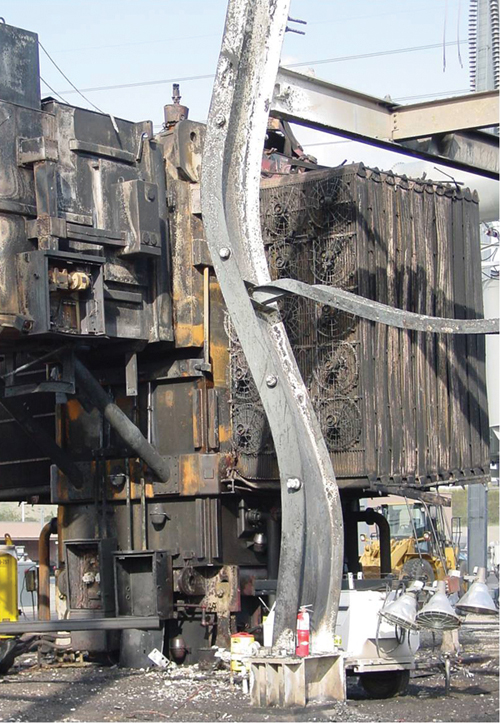Electrical Transformer Fire and Explosion Protection
Learning Objectives:
- Assess why transformers fail and discuss causes and effects of transformer fires
- Describe the limits of Portland cement concrete and other materials in containing electrical transformer fires
- List key containment strategies for fire and explosion protection and identify the most effective fire containment solutions
- Describe how to retrofit electrical transformer yards with fire- and blast-resistant concrete walls to minimize potential damage and maximize safety
Credits:
Electrical transmission and distribution (T&D) systems are at the heart of every developing economy. Demand for electricity rapidly increases as a nation or country becomes more developed and industrialized. Economies that are emerging or expanding such as China and India, as well as those in the Middle East and Latin America, are currently experiencing a period of rapid growth and expansion of their electrical T&D systems. According to Lloyd's of London the number of new, large transformers built around the world each year is less than 100.1 Manufacturers are weighed down by orders from these emerging economies, where new electrical grids are being built to cope with the demand for power. The lead time for new large transformers can be up to three years.
Aging U.S. Transformers
Growing concerns continue to surround the aging T&D systems in the United States. The electrical power system in the United States experienced its booming growth period beginning in the early to mid-twentieth century, reaching a peak in 1973-1974, when enough new transformers, capable of handling 185 GVA (giga volt amperes) of power, went into service. The large step-up and step-down substation transformers that were installed throughout the boom of the 1960s and 1970s are now over forty years old and are operating well past their service life expectancy. Add to this the continually increasing operating stress that results from load increases driven by system growth, and the potential risk of failure of these large transformers becomes unavoidable.
Why Transformers Fail
Transformer failures occur for a variety of reasons including insulation deterioration, lightning, line surges, overloading, material failure, and oil contamination to name a few. According to an insurance sponsored study titled "Analysis of Transformer Failures," completed by HSB Inspection & Insurance Co., the primary cause of failure was the deterioration of aging insulation which accounted for 25 percent of transformer failures included in the study.2 NEMA, the National Electrical Manufacturers Association has recognized that the principal underlying cause of transformer failures involves breakdown of the insulation.3
 |
Remnants of a large transformer fire Photo courtesy of Alonso Rodriguez |









